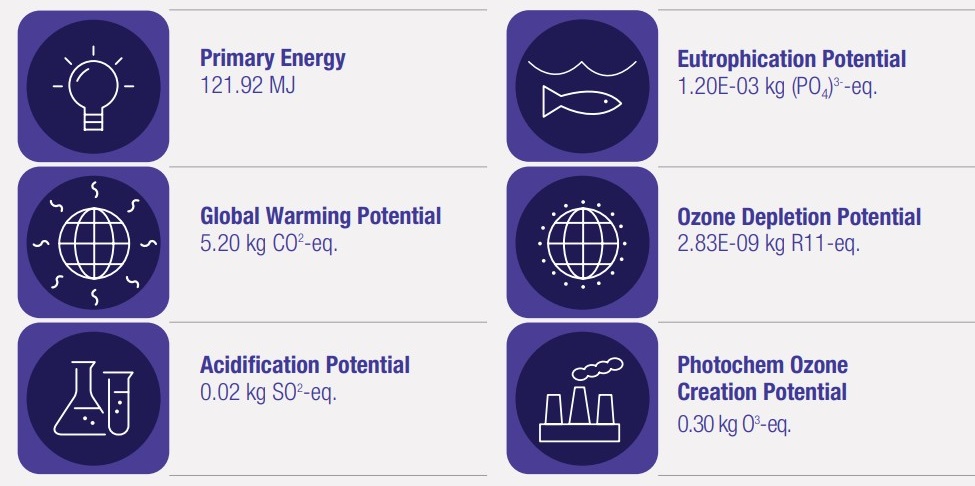Environmental Product Declarations (EPDs)
Environmental Product Declarations (EPDs) are a way for manufacturers to take comprehensive, third-party-verified LCAs, which are quite complex, and turn them into standardized declaration labels for their products.
"EPDs are communication tools that bring complex LCAs into a more user-friendly format by streamlining the information presented and enforcing as much consistency as possible.”EPDs are Type III environmental declarations (following ISO 14025
- John Jewell, senior consultant, thinkstep, Boston
EPDs are more comprehensive than single-attribute product declarations and more reliable than non-standard life cycle claims. Although the ISO framework and PCRs are internationally coordinated, registries of EPDs are maintained by country-specific Program Operators. In the United States, these include (but are not limited to) ASTM International![]() , NSF International
, NSF International![]() , The Sustainability Consortium
, The Sustainability Consortium![]() , UL Environment
, UL Environment![]() , etc. Note that the International EPD System®
, etc. Note that the International EPD System®![]() is operated by a company called EPD International AB. However, legitimate EPDs used in the United States need not be registered with the International EPD System.
is operated by a company called EPD International AB. However, legitimate EPDs used in the United States need not be registered with the International EPD System.
An EPD will have certain characteristics:
- Compliance with ISO standards
- Adherence to the appropriate industry-standard PCR
- Third party certification of the LCA process
- A clear description of the functional unit
- A list of the life cycle stages considered in the analysis
Read an overview about how to get an EPD here![]() .
.
Examples
- You might use EPDs to compare different flooring material options you are considering for your project, such as Vinyl Tile
 and Ceramic Tile
and Ceramic Tile .
.

- You might use EPDs to compare specific suppliers for the same product type such as steel rebar, such as Reinforcing Steel #1
 and Reinforcing Steel #2
and Reinforcing Steel #2

